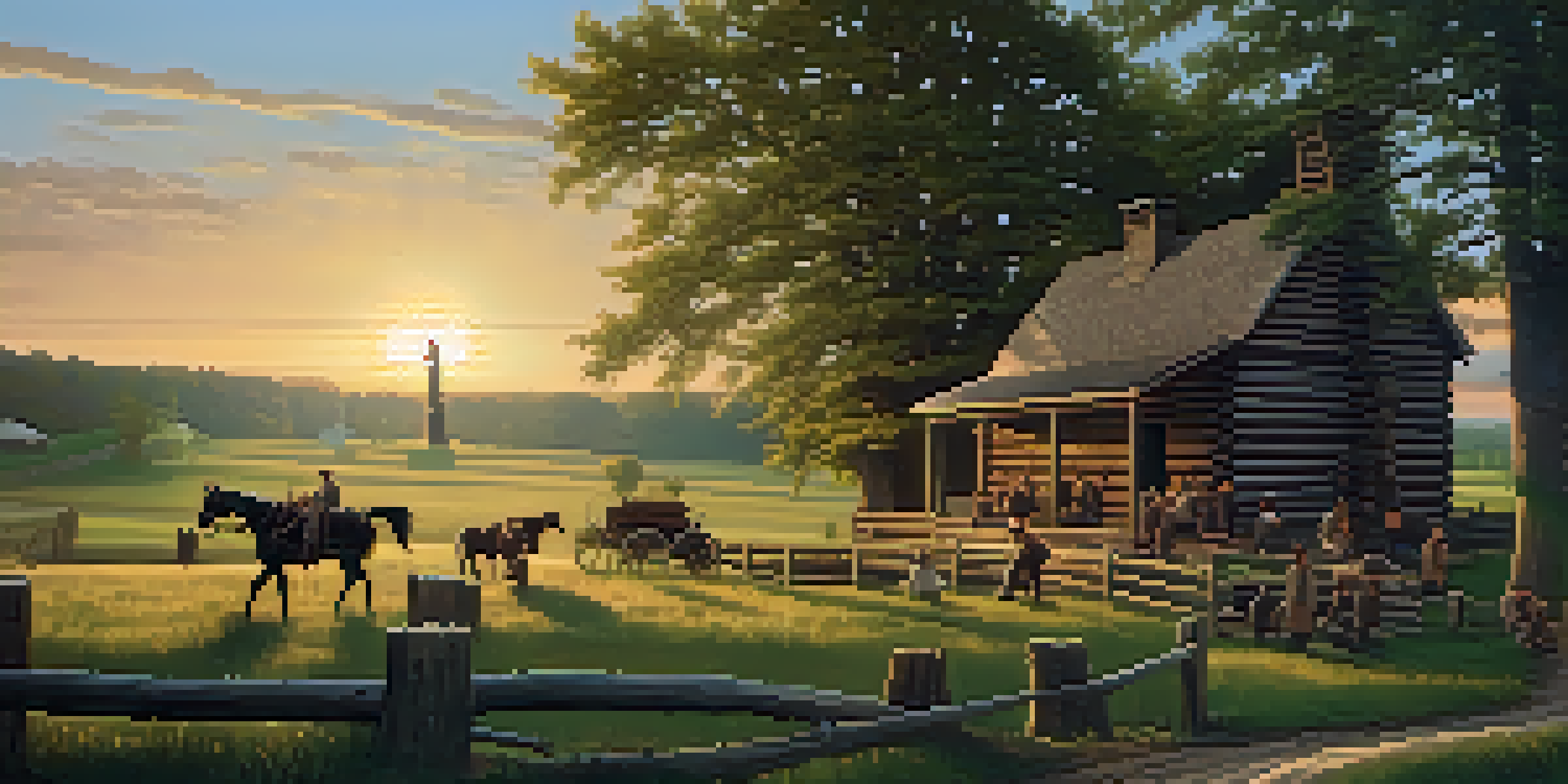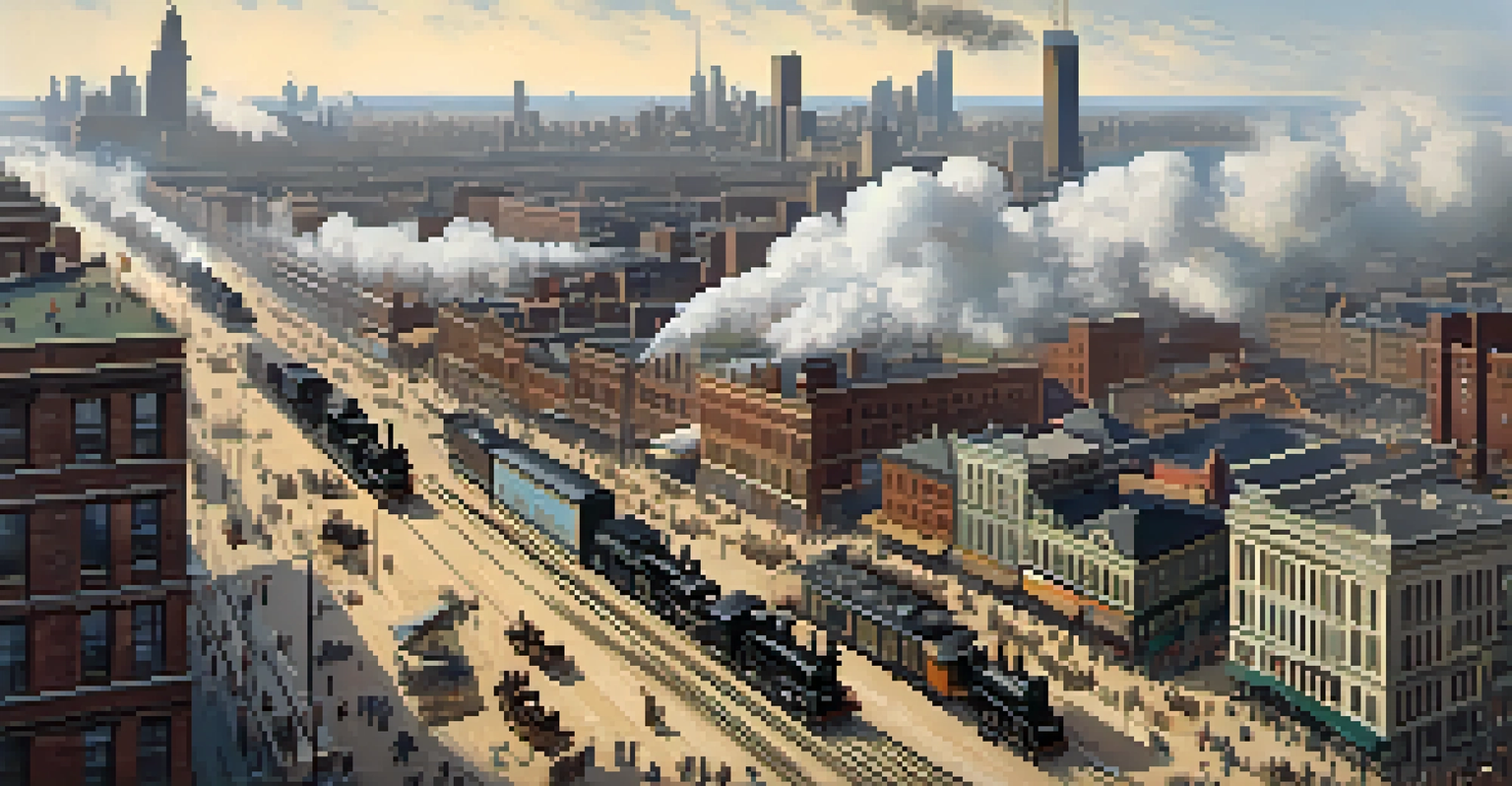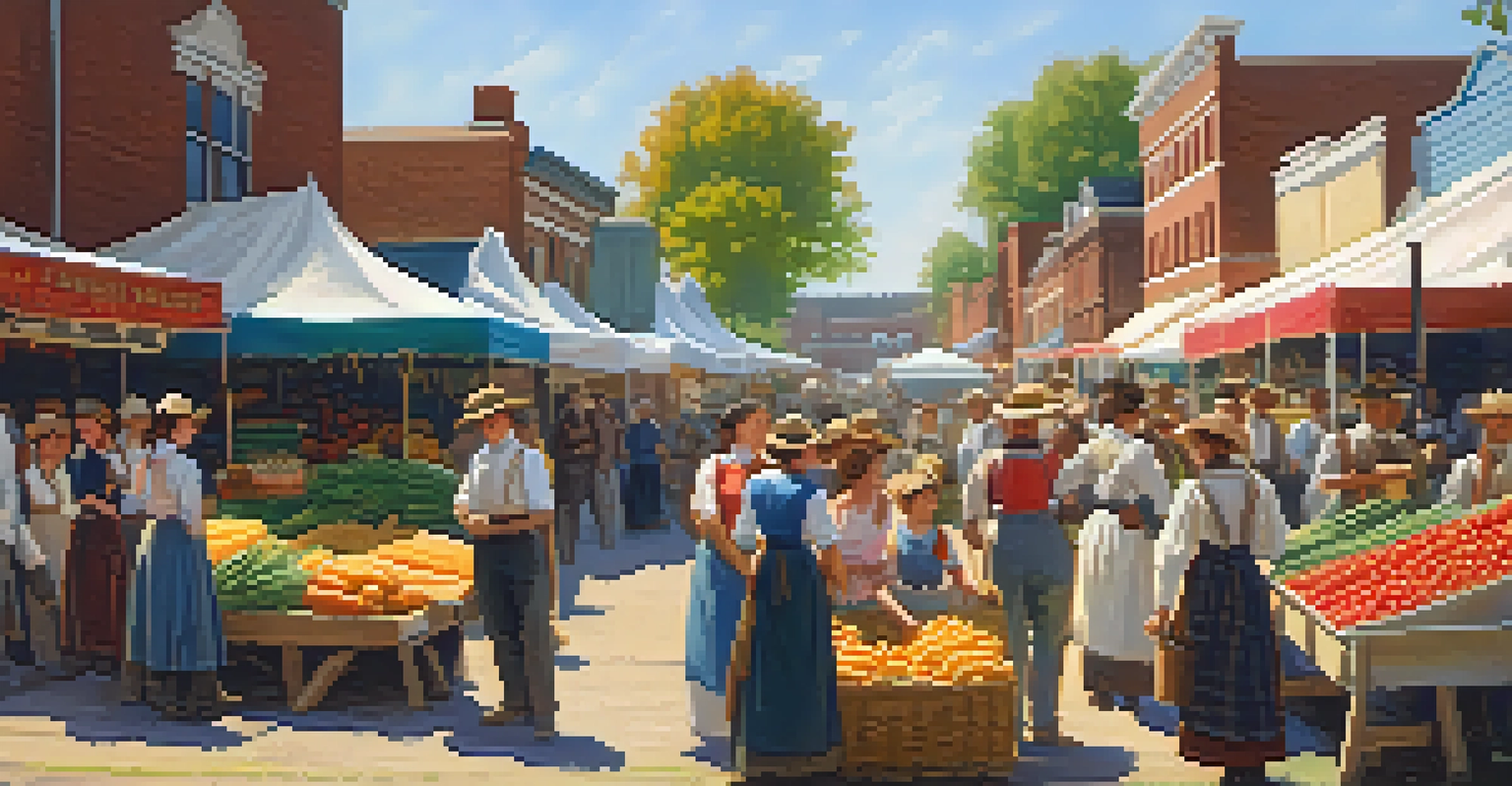Illinois in the 19th Century: Growth and Challenges Faced

The Early Settlements: Foundations of Illinois
In the early 19th century, Illinois was a land of opportunity drawing settlers from various backgrounds. The promise of fertile soil and vast resources attracted farmers, traders, and immigrants. Communities began to sprout, with towns like Kaskaskia and Cahokia leading the way, establishing a foundation for growth.
The land of Illinois is fertile, and it embraces the spirit of its people who have relentlessly worked to cultivate their dreams.
These early settlements were marked by a spirit of determination, as pioneers worked hard to carve out lives in the wilderness. They built homes, schools, and churches, creating a sense of community amidst the challenges of nature. This pioneering spirit laid the groundwork for the state's future development.
However, this growth was not without its challenges. Settlers faced harsh winters, limited infrastructure, and the constant threat of conflicts with Indigenous populations. Despite these hurdles, the resilience of the early Illinoisans set the stage for the state's expansion.
Transportation Revolution: Linking Communities
The 19th century saw a transportation revolution that transformed Illinois, connecting its burgeoning towns. The advent of railroads, such as the Illinois Central Railroad, played a pivotal role in this development, facilitating trade and travel. This new network allowed goods, people, and ideas to flow freely across the state.

As rail lines expanded, so did the economy. Farmers could now transport their produce to far-off markets, while manufacturers accessed raw materials more easily. This connectivity fostered growth in urban areas like Chicago, which quickly became a hub of commerce and culture.
Early Settlements Shaped Illinois
Pioneers established communities amidst challenges, laying a strong foundation for the state's future growth.
Yet, this rapid expansion also brought challenges. The environmental impact of railroads and the disruption of local economies raised concerns. Furthermore, the rush for land led to conflicts and displacement of Indigenous communities, highlighting the complex consequences of progress.
The Gold Rush and Its Impact on Illinois
The California Gold Rush in the mid-1800s had a ripple effect that reached Illinois. Many residents, driven by dreams of striking it rich, left their homes to seek fortunes in the West. This mass exodus created labor shortages and economic shifts in the state, particularly in agriculture and manufacturing.
In every city, the people forge their identities through labor, resilience, and the shared pursuit of progress.
However, the Gold Rush also sparked a wave of innovation and entrepreneurship back home. As people left, those who remained sought to fill the gaps, leading to the rise of new businesses and industries. This period of adjustment ultimately contributed to Illinois' economic resilience.
Moreover, the Gold Rush brought an influx of diverse populations to Illinois, enriching its cultural landscape. Immigrants from various backgrounds settled in the state, contributing to a vibrant mosaic of communities that would shape Illinois' identity for generations to come.
The Role of Agriculture in Illinois' Growth
Agriculture played a crucial role in Illinois' development during the 19th century. The state's fertile soil earned it the nickname 'the Prairie State,' allowing farmers to cultivate vast fields of corn and wheat. This agricultural bounty not only sustained local communities but also positioned Illinois as a key player in the national economy.
The introduction of new farming techniques and innovations, such as the reaper invented by Cyrus McCormick, revolutionized productivity. These advancements allowed farmers to increase their yields and efficiency, further boosting the state's agricultural output. As a result, Illinois became a significant supplier of food to both domestic and international markets.
Transportation Revolution Boosted Economy
The expansion of railroads connected towns and facilitated trade, significantly enhancing Illinois' economic landscape.
However, the reliance on agriculture also posed challenges, including vulnerability to market fluctuations and natural disasters. Droughts, floods, and pests could devastate harvests, reminding farmers of their reliance on nature. Despite these challenges, agriculture remained a cornerstone of Illinois' identity and economy.
Urbanization: The Rise of Cities in Illinois
As the 19th century progressed, Illinois witnessed rapid urbanization, with cities growing at an unprecedented pace. Chicago emerged as the most significant urban center, fueled by its strategic location as a transportation hub. The influx of immigrants and rural residents seeking job opportunities transformed the city into a bustling metropolis.
This urban growth brought both opportunities and challenges. While cities became centers of commerce, culture, and innovation, they also faced issues like overcrowding, inadequate sanitation, and labor unrest. The rise of industrialization led to the exploitation of workers, prompting the formation of labor unions and movements advocating for better conditions.
Despite these struggles, urbanization fostered a sense of community and cultural exchange. Neighborhoods formed around ethnic identities, creating vibrant enclaves that enriched the social fabric of the state. This blending of cultures laid the groundwork for Illinois' diverse identity.
The Impact of the Civil War on Illinois
The Civil War profoundly impacted Illinois, shaping its political, social, and economic landscape. As a Union state, Illinois played a crucial role in supplying troops and resources to the war effort. Notably, President Abraham Lincoln, a native of Illinois, became a symbol of the state's commitment to preserving the Union.
The war brought about significant changes in the lives of Illinoisans, as many families were affected by the loss of loved ones and the economic strains of conflict. Communities rallied to support soldiers, organizing fundraising efforts and providing care packages. These collective efforts fostered a sense of unity and resilience among the population.
Social Reforms Advocated for Change
The rise of diverse populations and urbanization in Illinois sparked movements for education, labor rights, and women's suffrage.
After the war, Illinois faced the challenge of reintegrating veterans and addressing the needs of a changing society. The post-war period saw shifts in labor, land ownership, and civil rights, laying the groundwork for future social movements. The experiences of the Civil War left an indelible mark on Illinois' identity.
Social Reform Movements: A Call for Change
The 19th century was a time of social upheaval and reform in Illinois. As cities grew and diverse populations emerged, so did calls for change in areas like education, labor rights, and women's suffrage. Activists, inspired by a shared vision of a better society, worked tirelessly to advocate for these causes.
One notable movement was the push for women's rights, which gained momentum in Illinois through the efforts of pioneers like Jane Addams. Her work in settlement houses highlighted the need for social reform and empowerment for women, reflecting broader national movements. This activism laid the groundwork for future generations to continue the fight for equality.

Additionally, labor movements emerged in response to the harsh conditions faced by workers in rapidly industrializing cities. Strikes and protests became common as laborers sought better wages and working conditions. These social reform movements not only addressed immediate concerns but also shaped the moral and ethical landscape of Illinois.